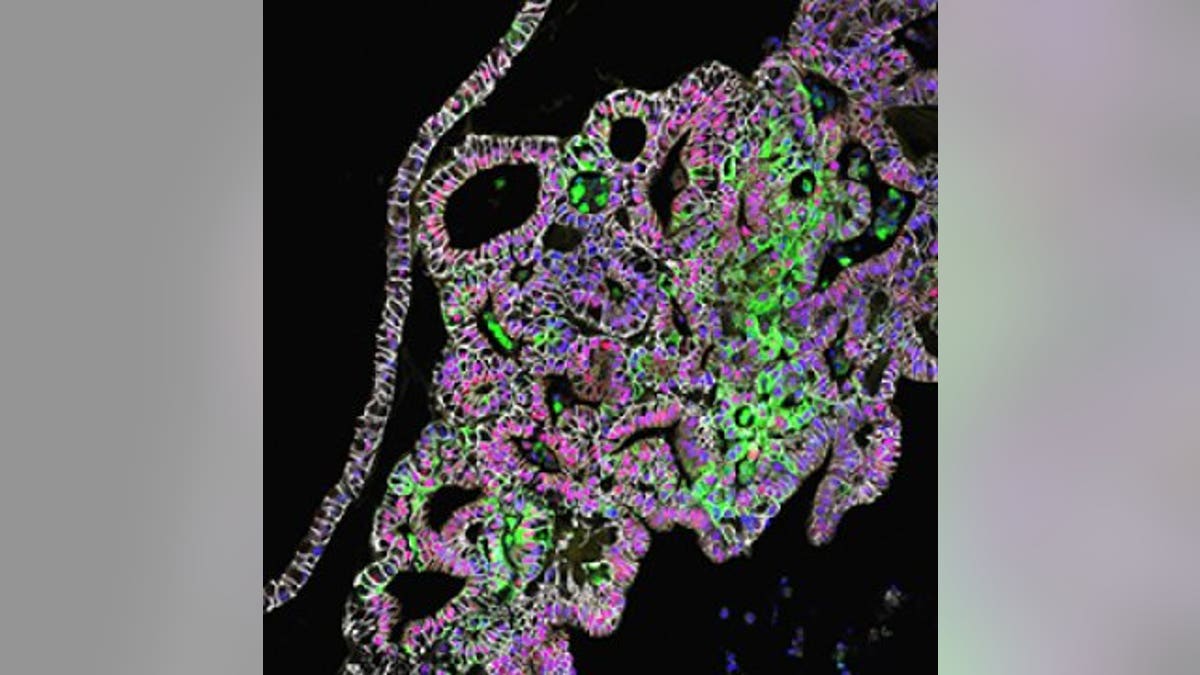
This confocal microscopic image shows tissue-engineered human stomach tissues from the corpus/fundus region, which produce acid and digestive enzymes. (Image courtesy of Cincinnati Children's Hospital Medical Center)
With a goal to better study how organs form during embryonic development, researchers have successfully used stem cells to generate human stomach tissues in a petri dish that produce acid and digestive enzymes. The Cincinnati Children’s Hospital Medical Center researchers published their findings online this week in Nature— two years after successfully generating the stomach’s hormone-producing region, known as the antrum.
The new tissues, Science Daily reported, came from the stomach’s corpus/fundus region. Researchers said the successful growth will give them access to study diseases and model new treatments in ways that were previously impossible.
"Now that we can grow both antral- and corpus/fundic-type human gastric mini-organs, it's possible to study how these human gastric tissues interact physiologically, respond differently to infection, injury and react to pharmacologic treatments," said Jim Wells, PhD, principal investigator and director of the Pluripotent Stem Cell Facility at Cincinnati Children's, according to Science Daily. "Diseases of the stomach impact millions of people in the United States and gastric cancer is the third leading cause of cancer-related deaths worldwide."
The research team is also focusing on esophagus, stomach, pancreas and intestines, with a focus on finding new treatments for genetic diseases like Hirschsprung’s disease and monogenic diabetes, according to Science Daily.
